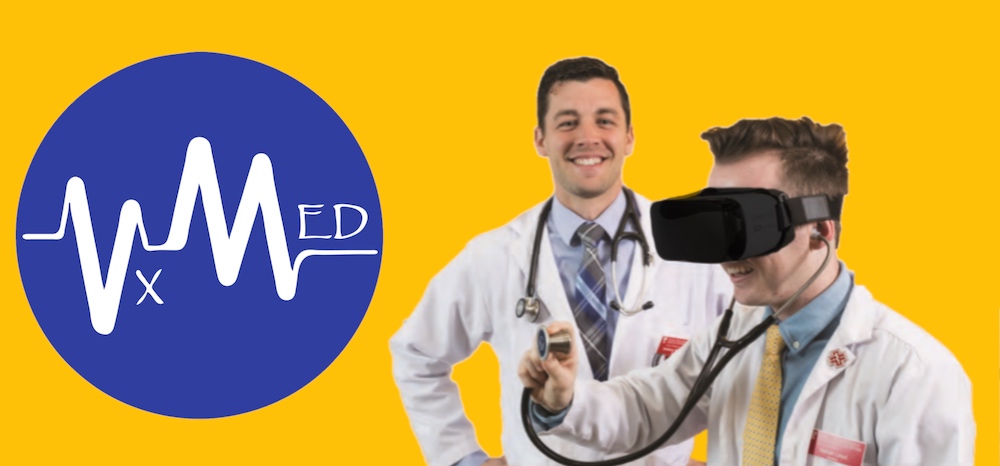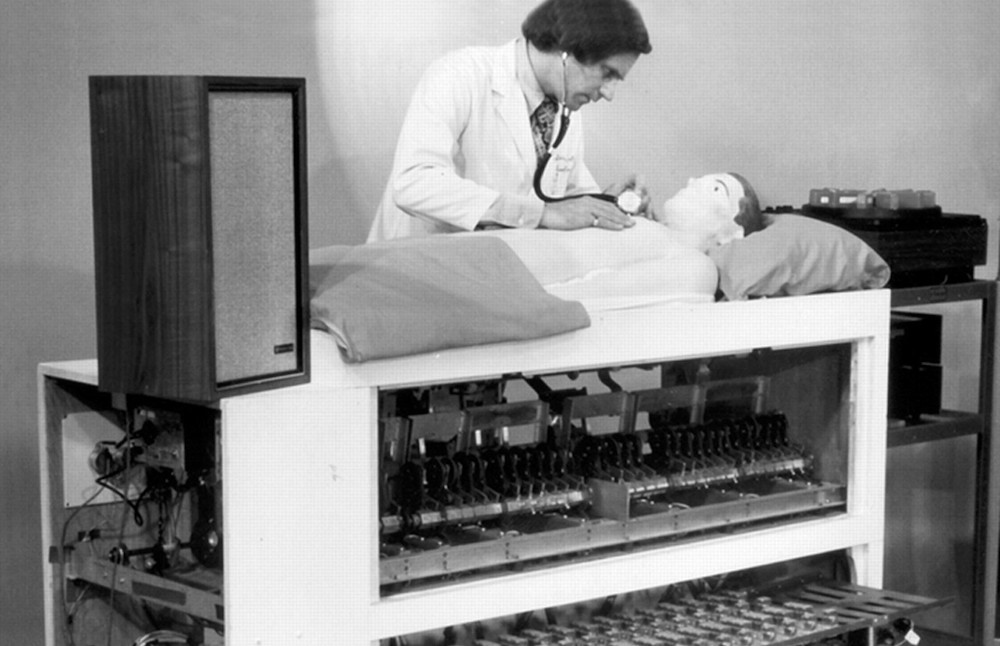VxMED Transforms Outdated Learning Methods Through VR Simulation
On a mission to reinvent higher education for the rising generation and to reignite the joy of learning, VR technology company VxMED was developed by two entrepreneurs passionate about medicine and clinical simulation. They believed that being forced to rely on outdated learning methods to absorb mountains of information leaves many learners feeling overwhelmed and burned out. To revolutionize how learners absorb information, VxMED is now translating textbook and lecture medical knowledge into an interactive and enjoyable virtual learning experience.
When Co-Founder and Chief Executive Officer Anthony Betteridge and Co-Founder & Chief Science Officer Nathan Lloyd founded VxMED in 2019, they set out to utilize virtual reality technology to create interactive clinical patient encounters. Each encounter would feature a unique 3D patient exhibiting the lifelike symptoms of important diseases for learners to master. As learners interact with each virtual patient — identifying symptoms, ordering tests, suggesting treatment, etc., their medical knowledge would expand, and their ability to care for patients would improve.
Turning this vision into a reality, VxMED launched with the help of grants from the Texas Tech Innovation Hub, a resource for student and faculty entrepreneurs at Texas Tech University. This institution is where both Betteridge and Lloyd studied together for their medical licensing exams.
Sponsored Content:
“When I got to Texas Tech to start medical school, I noticed that the first years of medical school were predominantly textbook- and lecture-based, and there were only a handful of in-person simulations that were nice and effective,” Betteridge said. “However, there wasn’t the capacity for all medical students to be doing regular daily exercises at the simulation center.”
During this time, he and his fellow learners were primarily relying on PowerPoint presentations and recorded lectures to prepare for the third and fourth years of medical school. As these later years are clinic- and hospital-based, he and Lloyd had the idea to create a set of clinical cases that presented that same textbook and lecture information in an interactive way to introduce learners to basic medical science concepts.
“We essentially are focused on training and teaching early medical students how to interact with patients, and learn how to create and manipulate a differential diagnosis as they assess the patient history, choose physical exams, and run lab and diagnostic tests. Then the didactic information that’s typically in lectures is interjected into the scenarios as the learners go.”
He explained that all of VxMED’s patient models are very realistic because they’re actual 3D scans of models of real patients and real people — they are not computer-animated models. Additionally, the differential diagnosis coach is a huge advantage, as VxMED models how evidence-based medicine should influence a learner’s perception of their differential diagnoses.
Sponsored Content:
The solution also allows them to go through the process of creating their own differential diagnosis list, filtering that list, and ordering that list as they discover physical exam, history, and diagnostic lab test findings in real time. VxMED then scores the learners as they go through this process and gives them “experience points,” similar to a model used in the gaming industry.
Currently, VxMED is compatible with PC, Windows and Mac personal computers, laptops and desktops, as well as Steam VR-capable devices. Therefore, any VR headset that’s capable of running Steam VR can use VxMED.
VxMED’s New Case Management Tool
The new VxMED case management tool will allow educators around the world to custom-build their own VxMED cases within the company’s platform through a dashboard. Publishing medical content cases in this way is designed to be a new and enjoyable experience for authors and learners. For VxMED, this marks an exciting opportunity to give the platform a wider audience.
“We’re hoping that the content-authoring tool will be very usable and intuitive to create cases. Starting out, the tool will even be able to build things automatically that the user can then update or change and manipulate, should they desire,” Betteridge explained. “Learners will be able to select the target audience, the patient model and the simulation’s 3D environment.” From there a pre-populated list of physical exams and lab tests is fully editable by the case author(s). Libraries of medical imaging and sounds will be available to include in the case, and authors will be able to upload their own multimedia as long as the media is sourced in a HIPAA compliant manner and all patient information is properly de-identified.
VxMED also has a grant right now with the U. S. Air Force to use some of these tools to create battlefield trauma cases, or other cases unique to military simulation. The case offering dashboard will allow the USAF to readily adapt those cases and the platform to a variety of different learners’ needs. These could potentially include veterinary medicine professionals, nurse practitioners, physician assistants, medical residents, attendings, and more.
“This will really broaden the ability for anybody to adapt VR to their very specific training needs,” Betteridge stressed. The case-authoring tool will become the foundation for peer-reviewed specialty specific VxMED VR journals in which students, residents and faculty will be able to publish interactive case reports. Instead of reading about the interesting and educational cases in the traditional journals, tackle the case as if you were the case patient’s physician. The experience will transform the way medical professionals interact with continuing medical education (CME).
Betteridge’s Military Simulation Experience
Helping to shape his passion for improved healthcare simulation, Betteridge was active duty United States Air Force for seven years prior to enrolling at Texas Tech University. Initially, he served as a B-52 pilot, and ended his career in the USAF as an instructor pilot — where he gained valuable experience operating advanced simulation trainers as a learner and instructor.
“Pilot training relies heavily on simulation as you prepare to get into the jet for the first time. So you start out with simulators and then, as you start doing live instruction in the aircraft, you’re back in the sims on a regular basis,” Betteridge explained. “Pilot training relies on high-fidelity simulation, and the purpose is to make learning as close to realistic as possible.”
Betteridge added that pilot simulators have become very accurate, and truly replicate what flying a specific aircraft with unique characteristics is like. For this reason, he believes there are no more skeptics who doubt the ability of aviation simulators to enhance training and safety. Betteridge recalls his own pilot training experience as wonderful, noting the USAF has redefined the use of aviation simulation over the decades.
“Now [the USAF] is beginning to adopt VR training, which is newer on the scene,” Betteridge said. “Sims continue to be invaluable in preparing crews to work together before going and performing the missions in the aircraft in training, and then before actually going and participating in large force joint and multinational missions around the world.”
Learn More About VxMED
Lance Baily, BA, EMT-B, is the Founder / CEO of HealthySimulation.com, which he started in 2010 while serving as the Director of the Nevada System of Higher Education’s Clinical Simulation Center of Las Vegas. Lance also founded SimGHOSTS.org, the world’s only non-profit organization dedicated to supporting professionals operating healthcare simulation technologies. His co-edited Book: “Comprehensive Healthcare Simulation: Operations, Technology, and Innovative Practice” is cited as a key source for professional certification in the industry. Lance’s background also includes serving as a Simulation Technology Specialist for the LA Community College District, EMS fire fighting, Hollywood movie production, rescue diving, and global travel. He and his wife live with their two brilliant daughters and one crazy dachshund in Las Vegas, Nevada.
Sponsored Content:
















